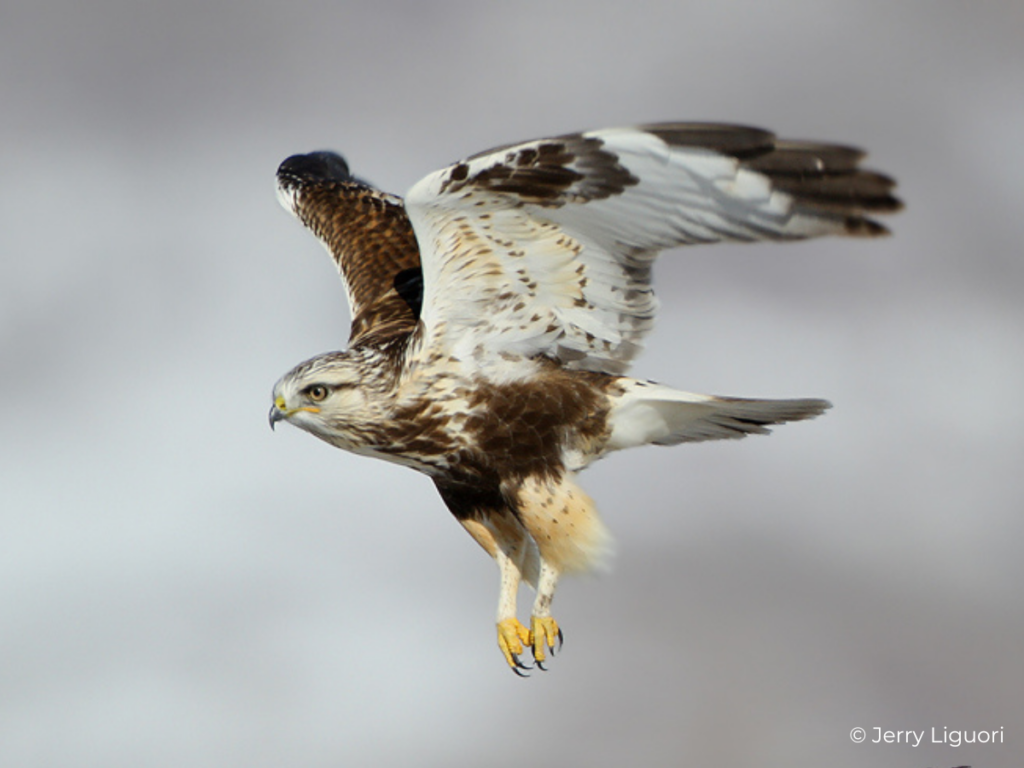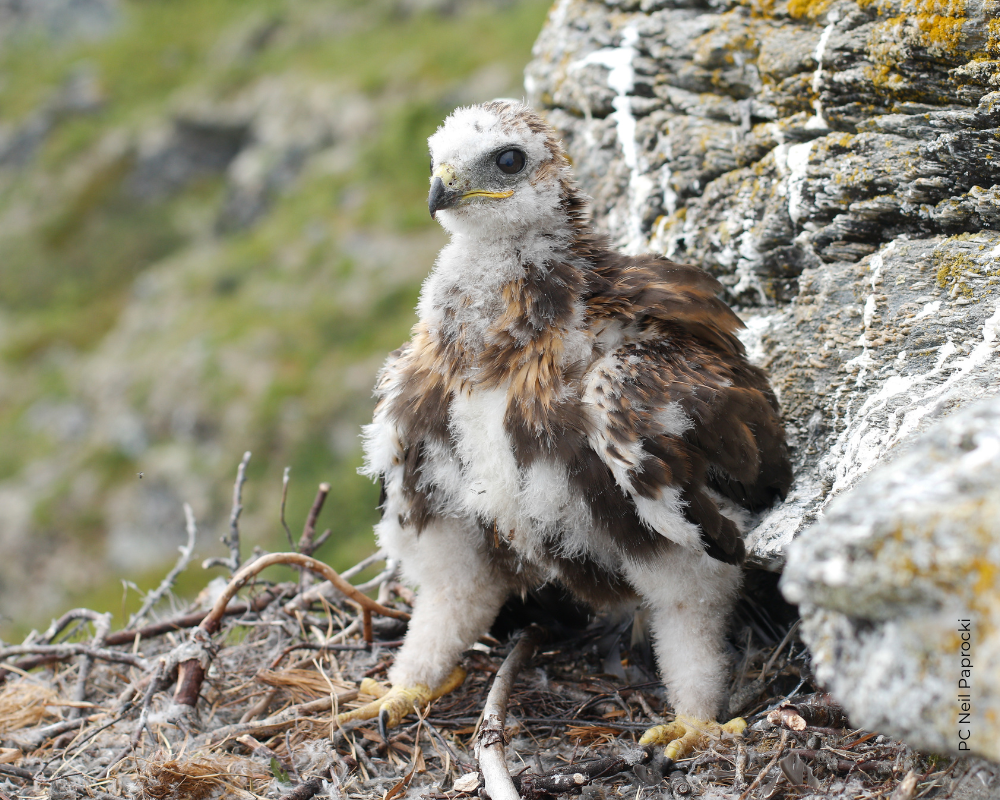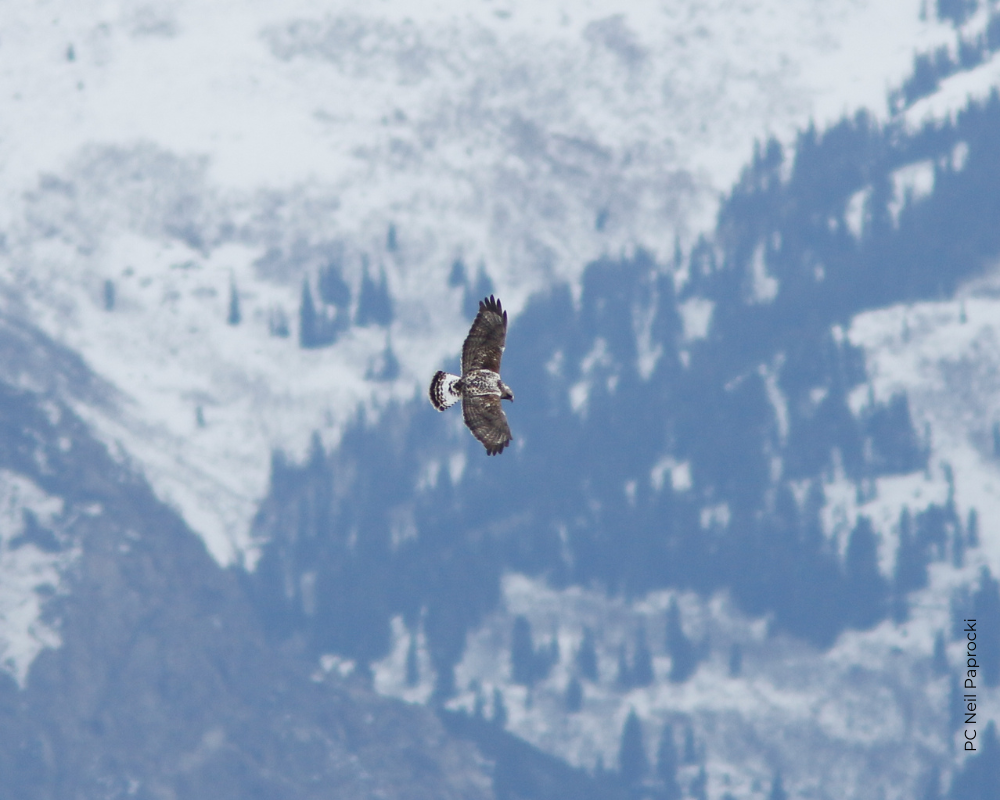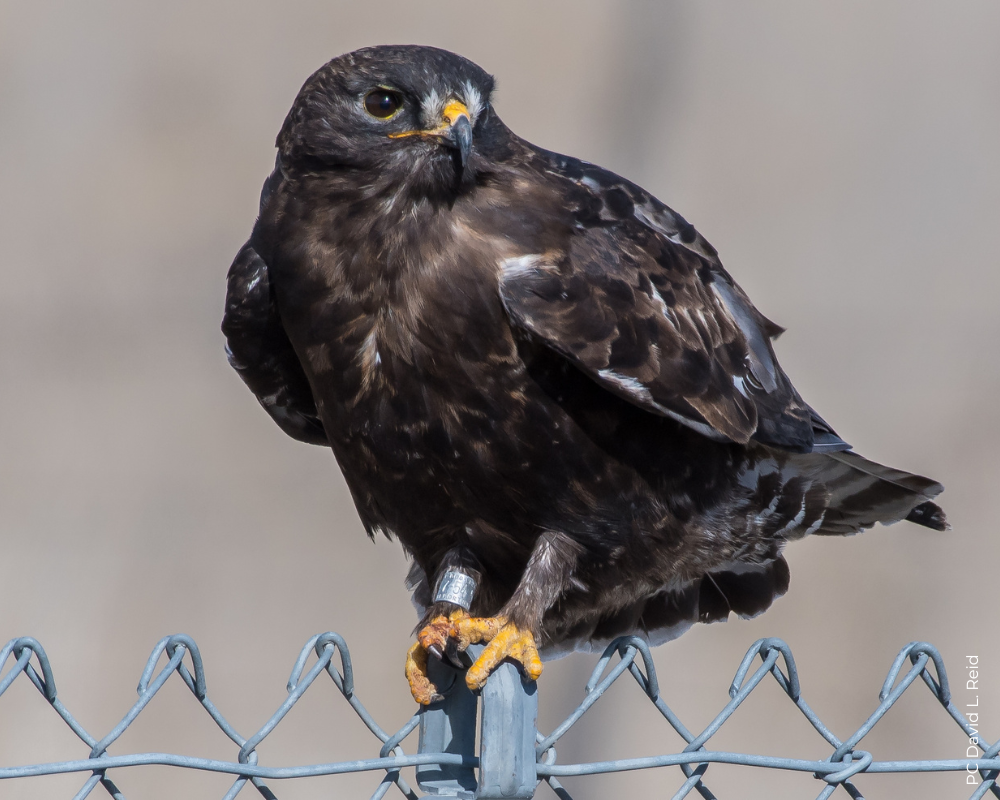Overview
Rough-legged Hawks are birds of the Alaskan and northern Canadian Arctic, nesting on cliffs or rarely on the ground, but are mostly seen by birders during migration and winter when they visit the Lower 48. They are more common in the northern states and rare in the southern, concentrating on the Great Plains and in agricultural valleys of the West. Like other Arctic predators, Rough-legged Hawks are somewhat cyclic in breeding success, tied to prey populations. During years of prey abundance, high numbers are noted at subsequent fall and spring hawk watches. Some birds remain north of the US-Canada border region in winter, especially in the East. Rough-legged Hawks are the only regularly occurring dark-morph buteo across much of the East.
Often found suspended in mid-air hovering or kiting over agricultural areas or grasslands, Rough-leggeds search for mice and voles to pounce on with a quick pull-in of the wings and drop from the sky. When hovering or kiting, they face into the wind to stay aloft as the head stays completely fixed, as if possessing a built-in gyroscope, while the body and tail adjust with the wind, flawlessly adjusting between kiting and hovering with the change in the wind. Rough-legged Hawks perch on roadside utility poles, fence posts, trees, or even on the ground as well, in search of prey. When perching in trees, they sit on the smallest twigs at the very top of trees, appearing too heavy for such frail branches.
Rough-legged Hawks are large buteos. Females are larger than males, with the largest birds weighing as much as large Ferruginous Hawks. But unlike other large buteos, they appear delicate, with small feet and a small bill, an adaptation that helps keep their bare parts less vulnerable to cold weather exposure. Rough-leggeds sometimes roost in large groups in winter, often with Ferruginous and Red-tailed Hawks in certain areas. Their call is a descending, whistled scream, similar to Ferruginous Hawk but higher in pitch.




